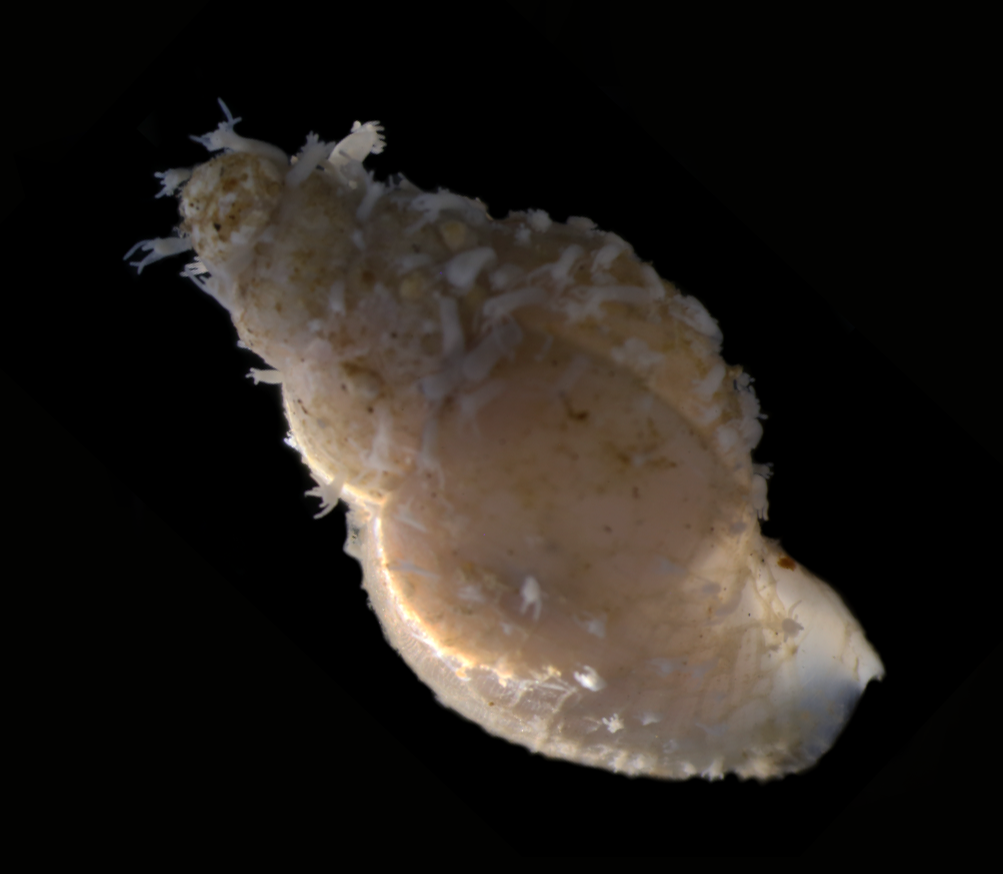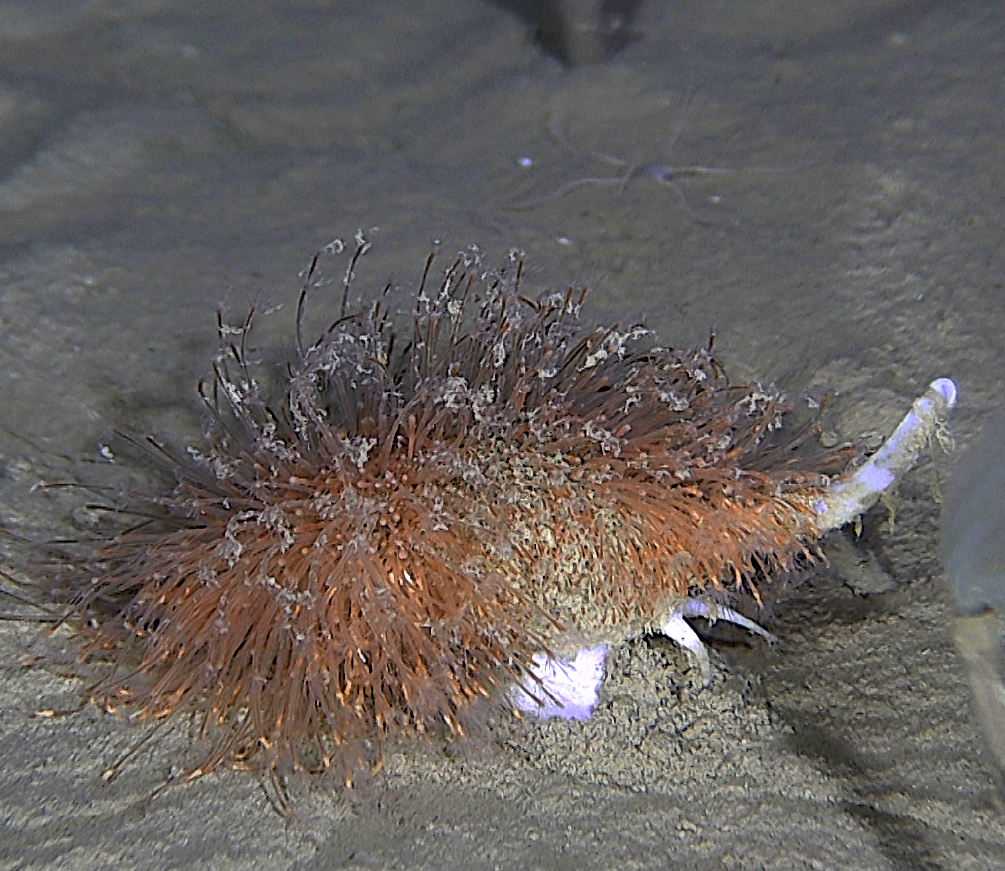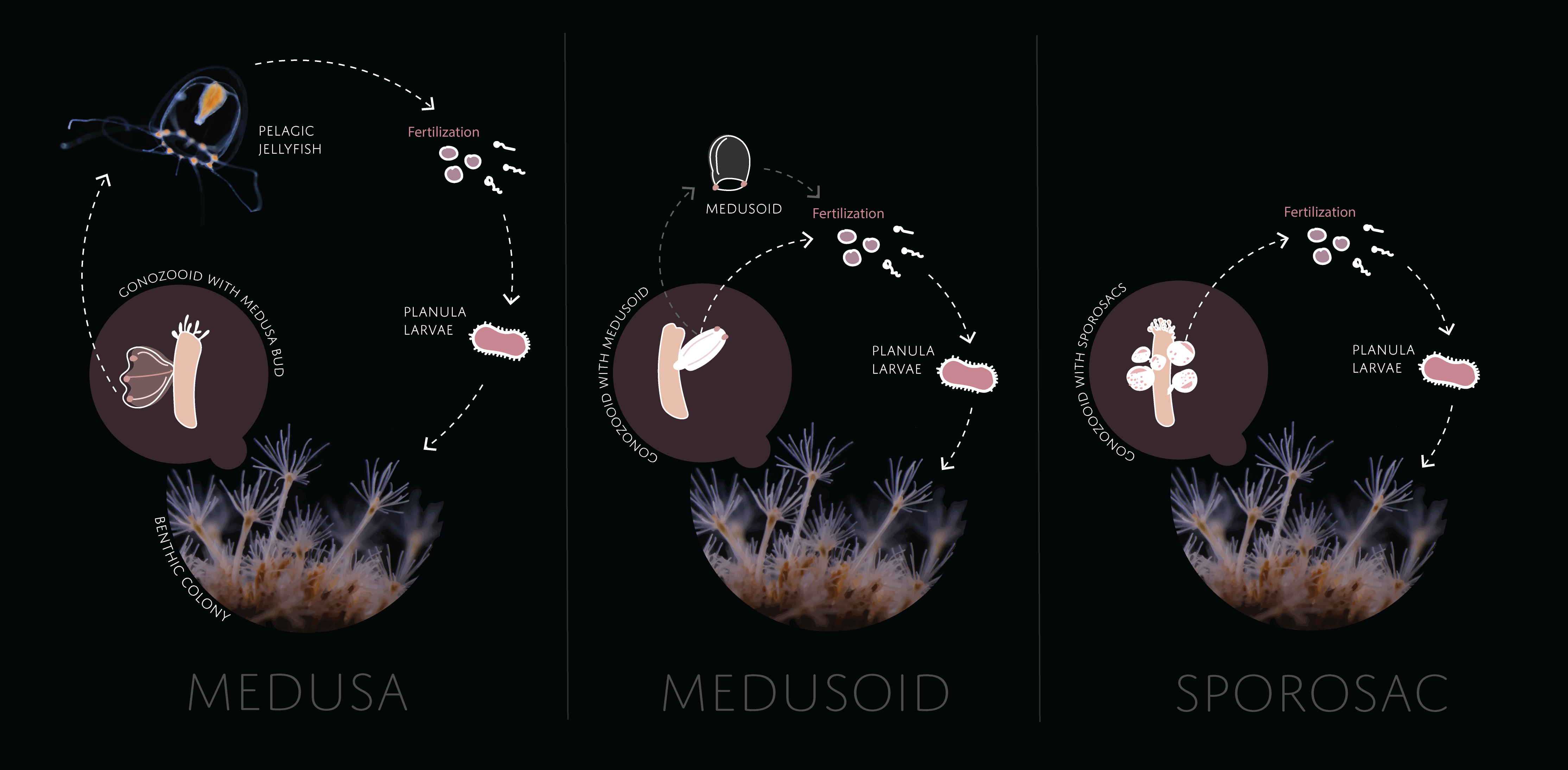Hydractiniidae
Hydractiniidae is a family of marine hydrozoans (Cnidaria: Hydrozoa) that contains approximately 120 valid species worldwide, 10 of which live in Norwegian waters. Hydractiniids are common and widespread, but most of them are small and often go unnoticed. Only a couple of species are easily encountered by beachgoers and scuba divers, in particular the club-headed hydroid (Clava multicornis) and the snail fur (Hydractinia echinata). Many hydractiniids live in association with other marine organisms and play important ecological roles as symbionts and predators, while other species are used in biomedical research as models for the study of cell communication and regeneration.
- Innhold
- Identification
- Hydroids
- Hydromedusae
- Biology, ecology and behavior
- Relevance for biological and medical research
- Sampling
- Taxonomy and systematics
Morphological characters used for identification of hydractiniid colonies.
Identification
Hydractiniids occur in two different forms: polyps (hydroids) and jellyfish (hydromedusae). The hydroids form colonies that live attached to different substrates at the sea bottom, including rocks, algae, hermit crabs and snail shells. The hydromedusae are produced by the hydroid colonies of some species. They are tiny (< 5 mm) and when they are released from the colony they swim freely in the sea.
All hydractiniids start their life as a larva (called planula) that swims around in search of a suitable substrate. The planula settles after a while and develops into a single polyp. This polyp in turn will produce more polyps, interconnected through a series of tubes (hydrorhiza) and thus creating a colony. In some species all the polyps of the colony are identical, but in other species the colony will consist of different-looking polyps which have different tasks such as feeding (gastrozooid), defense (dactylozooid), and reproduction (gonozooid). The gonozooids produce the gonophores, which are the sexual stage where the eggs and sperm will develop. The type of gonophores produced by a colony and the characteristics of the different polyp types are important features used to identify the species in Hydractiniidae. Young hydractiniid colonies that are not reproductive are therefore often impossible to identify based only on their morphology.
There are three types of gonophores in Hydractiniidae: fixed sporosacs, medusoids, and hydromedusae. Fixed sporosacs are sacs of eggs and sperm that remain attached to the colony. Medusoids are jellyfish-like structures that may or not be released into the water column, but they are not true jellyfish in the sense that they don’t have a mouth or tentacles and they die shortly after liberation. Hydromedusae are complete jellyfish that feed on plankton and take some time to mature, thus living for a longer period in the water column.
The diversity of gonophores and life-cycle strategies in Hydractiniidae.
Hydroids
Hydractiniid hydroids differ from all other hydrozoan polyps in a series of characteristics. Unlike leptothecate hydrozoans, hydractiniids have naked polyps (i.e. not protected by a chitinous skeleton). All hydractiniid species are marine and form colonies, and in all cases these colonies are attached to a substrate, in contrast to the free-swimming colonies of siphonophores and other naked-polyp hydrozoan families. The tentacles of hydractiniid polyps are all of the same type, simple and thread-like. Finally, the polyps of hydractiniids are always sessile, which means they do not grow on stalks but are instead attached directly to the ‘root’ system of the colony. This ‘root’ system is called hydrorhiza and it consists of the tubes and stolons that connect all polyps in one colony.
Hydractiniid polyps vary in shape, size and color, sometimes even within the same colony, depending on what substrate the animal is growing on. Mature and dense colonies often appear like furry mats on the shell of hermit-crabs or snails when observed with the naked eye. The colonies often develop spines, especially when they are growing on moving animals. The presence, shape and arrangement of spines can be useful for identification of hydractiniids, as well as the form of the hydrorhiza, which can be a reticulate mesh or a thick crust covering the substrate. The substrate where a colony is growing can also help us determine the identity of a specimen, but this character is not entirely reliable for identification.
Hydromedusae
The hydromedusae of Hydractiniidae are small (<5 mm). Like many other medusae produced by naked polyps, they are more or less bell-shaped. Their mouth is placed at the end of a tubular hanging structure called manubrium that contains the gastric cavity, and on which the gonads are developed. The manubrium is connected to the margin of the body through four radial canals. Unlike most other hydromedusae, the four lips of hydractiniid jellyfish are drawn out to form oral arms that end on 1 or 2 clusters of stinging cells. The margin of the medusa bears the tentacle bulbs, from which the tentacles arise. The number of tentacles vary from 8 to more than 40 in the hydractiniid species that live in Norway. These tentacles are never in groups, and this characteristic separates the hydromedusae of Hydractiniidae from similar-looking jellyfish in families Bougainvilliidae and Rathkeidae. No other structures are found at the margin of the medusa body.
Morphological characters used for identification of hydractiniid jellyfish.
Biology, ecology and behavior
Hydractiniid colonies are commonly associated with a range of different organisms, from snails to algae. They develop relationships that range from mere epibiotic (i.e. the hydractiniid lives on the other organism but without further interaction) to mutualistic (an intimate, mutually beneficial relationship develops between the hydractiniid and its substrate). In particular, the colonies growing on hermit crabs seem to protect their hosts against predators, while the hydroids increase their chances of finding food due to the crab’s movements.
The hydractiniid Clava multicornis, which in Norway grows often on the brown algae Ascophyllum nodosum and Fucus spp, is one of the few hydrozoans that can be commonly found in the intertidal zone.
Relevance for biological and medical research
Hydractiniidae is a well-studied group of hydrozoans and it includes several species that are widely used for research in developmental biology and immunology. Some species are important model organisms used to investigate how cells differentiate, how regeneration occurs, and how tissues and individuals recognize each other.
Sampling
Hydractiniid colonies are most easily collected by sampling their substrates. Rough gastropod shells, either inhabited by the snail or by a hermit crab, are the preferred substrate for many species; however some others are generalists and will be found on polychaete tubes, brown algae, crabs, polychaetes, pebbles, laminarian holdfasts, sponges, barnacles, and even artificial structures.
Shallow water species can be collected by snorkeling or SCUBA diving, and their substrates may also be collected with dredges and grabs. Bait traps can be set to lure snails and hermit crabs, increasing the chances of encountering hydractiniids. Small and inconspicuous colonies are best collected by examining suitable substrates under a stereomicroscope or a magnifying glass. Promising substrates include overgrown pieces of rock, snails, algae, and crabs. The potential substrates can also be left for several days in tanks with running sea water, allowing for new hydroid colonies to develop.
Hydractiniid hydromedusae are caught in plankton nets. Because of their size, nets with mesh sizes of around 200-300 µm are recommended for quantitative purposes, but specimens in good condition can also be obtained with larger mesh sizes. The speed at which the net is drawn is crucial to minimize damage to the hydromedusae during collection. Recommended towing speeds are approximately 0.5 knots.
Taxonomy and systematics
The taxonomy and systematics of Hydractiniidae is a work in progress, and the boundaries of the species and genera are still not well resolved. This is in part because hydractiniids are extremely variable, and the colonies of the same species look very different from one another depending on their age, developmental stage, and the substrate they are growing on. Some of the genera in the family (for example Schuchertinia and Clavactinia) are defined exclusively based on genetic characters, and the classification we currently use will certainly change in the future.
References
Brooks WR and Mariscal RN (1985). Protection of the hermit crab Pagurus pollicaris Say from predators by hydroid-colonized shells. Journal of Experimental Marine Biology and Ecology 87(2): 111–118. doi: 10.1016/0022-0981(85)90084-X.
Schuchert P (2008). The European athecate hydroids and their medusae (Hydrozoa, Cnidaria): Filifera Part 3. Revue suisse de Zoologie 115(2): 221-302.
Schuchert P (2012). North-West European athecate hydroids and their medusae: keys and notes for the identification of the species. Field Studies Council. Synopsis of the British Fauna (New Series) No. 59. 364 pp.







